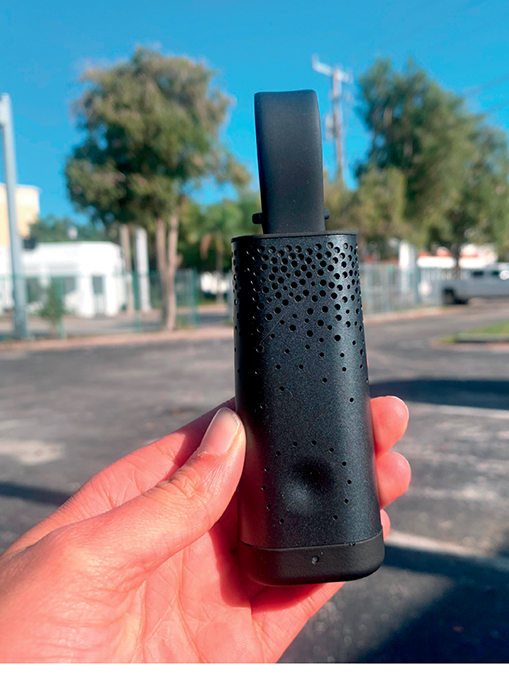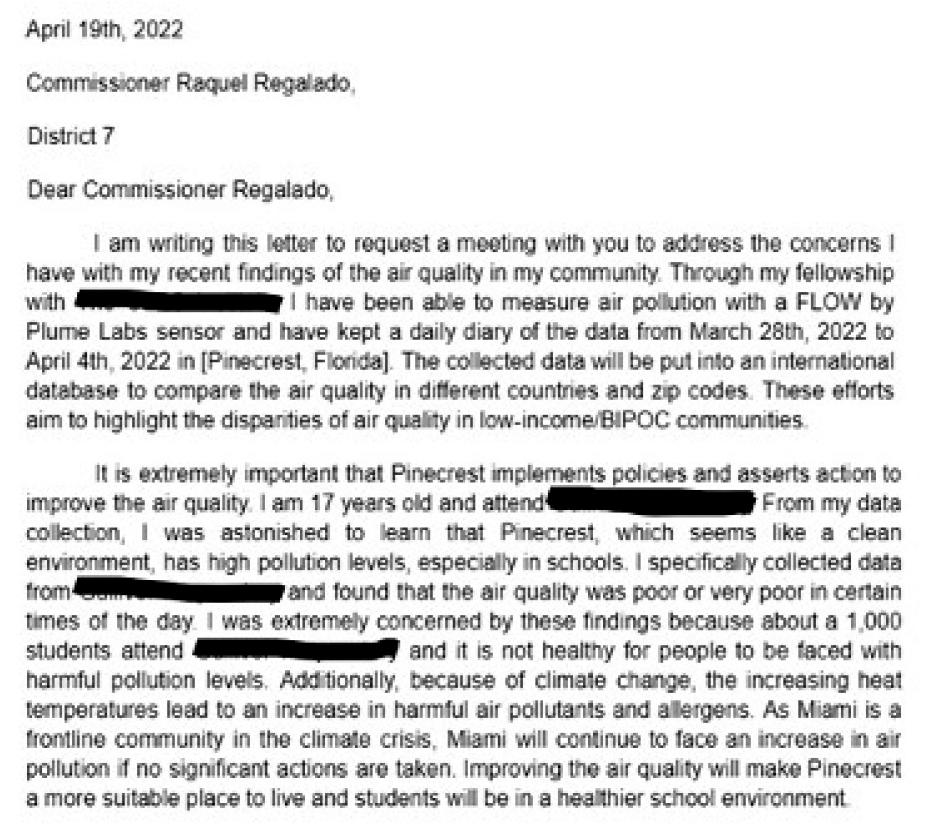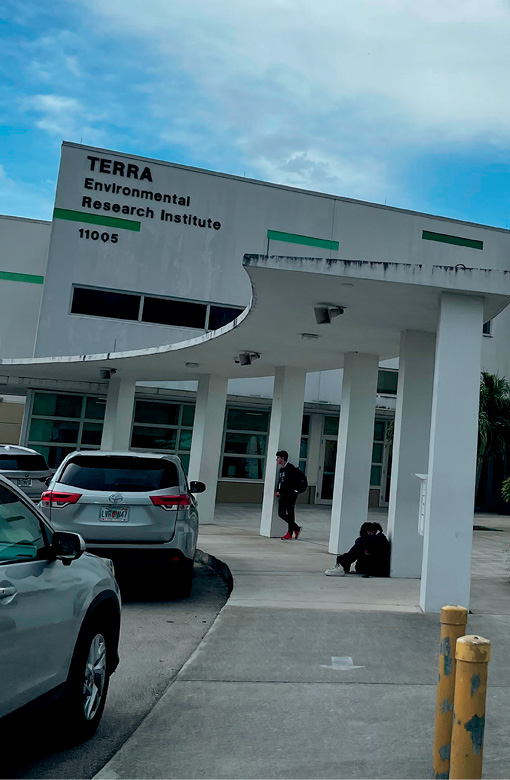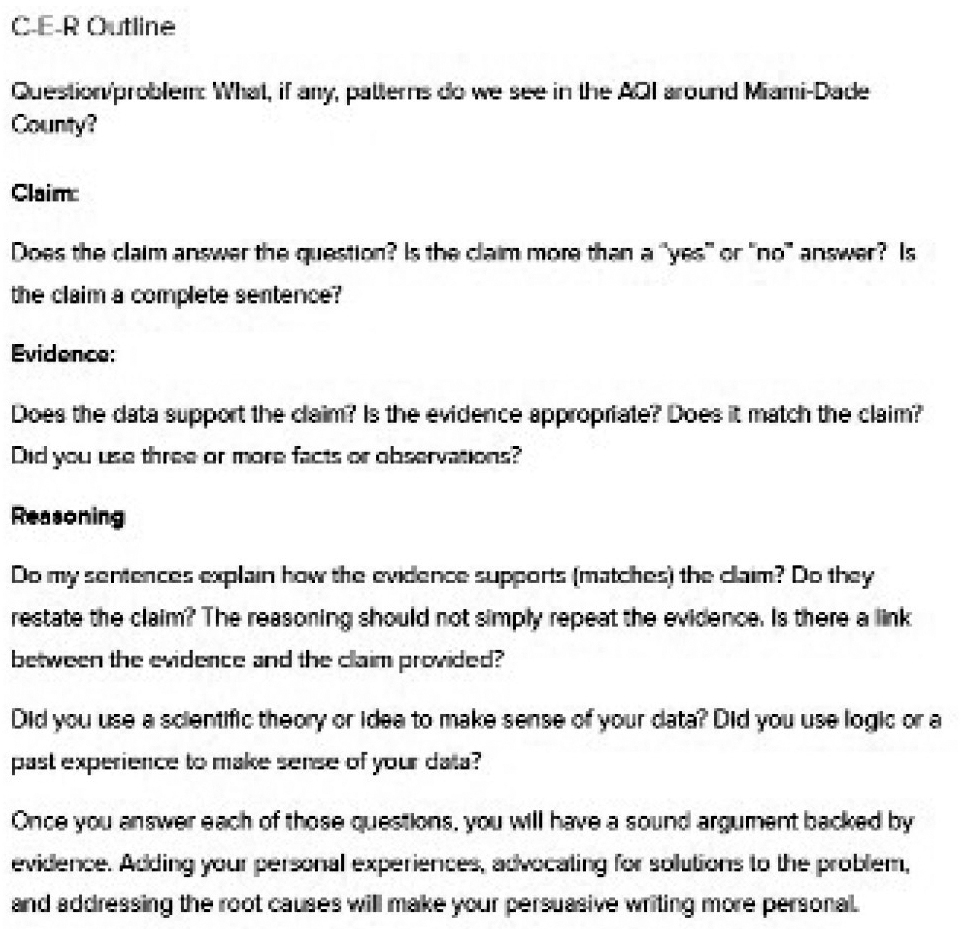feature
The Air We Breathe
Integrating citizen science with social justice to drive climate literacy
The Science Teacher—March/April 2023 (Volume 90, Issue 4)
By Karolyn Burns and Diego Molina-Castrillón

There is a great deal of discussion regarding underrepresented populations in STEM, in both education and policy spheres. Historically, science education has not adequately addressed the concerns and values of BIPOC individuals and women, especially those who fall into both categories (Rattan et al. 2018). One way that educators are addressing this disparity is by incorporating social justice into their curricula. This topic touches on most students’ lives, motivating them to learn the underlying concepts and take action in and for their communities (Russell 2013). By focusing on these communities, we allow students to bring their cultures, lived experiences, and values into the classroom, which helps teachers develop and implement culturally relevant topics and teaching practices. Focusing on traditional STEM narratives of progress, innovation, and competition does not address the environmental, ethical, and social justice issues students face, and they will not engage with topics that do not align with their reality and acknowledge their needs.
Climate change is one of today’s most pressing issues, and youth have much anxiety about their future, with extreme weather, food and water insecurity, and sea-level rise threatening many of their neighborhoods (Wu et al. 2020). Students engage and participate eagerly when climate change is addressed through a social justice lens and when they are given realistic paths toward solutions. Young women and girls, especially BIPOC girls, are highly motivated by altruism and value working for the good of others. By aligning these values with STEM, it can incentivize them to both engage with these subjects at school and to consider careers in the field (Wegemer and Eccles 2019).
In this study, students measure air quality, an environmental and climate justice issue. Areas with poor air quality tend to be near high levels of traffic and industry rather than near green spaces. These areas disproportionately include low-income communities of color, and researchers see much higher rates of asthma and other respiratory diseases in these populations. In a changing climate, air pollution will be worse, indoor air quality will be worse, and the weather will be more unpredictable, all of which will make asthma more difficult to manage. This provides a clear link between the variables studied by the students and the broader topics of climate change, environmental degradation, and social justice.
An established strategy to engage students in highly technical and complex topics is project-based learning (PBL). Learning through project-based instruction gives students opportunities to acquire knowledge and skills through engaging projects based on real-life challenges and problems (Chen and Yang 2019). Making the connections between classroom learning and authentic applications that can drive change in their communities improves students’ inherent motivation and self-efficacy (Shin 2018). It also increases interest in STEM careers and students’ perception of their skills in these fields, and it is an effective technique irrespective of the race and gender of the learners (Beier et al. 2018).
For this project, the driving question is “What patterns do we see in the air quality index (AQI) in different areas of Miami-Dade county?” Students received a portable air quality monitor (Flow by Plume Labs) and wore it throughout their daily routine: school, work, sports practice, and home. They then analyzed the data, engaged in civic action, and produced a video diary.
Project framework
The PBL workbook for this project incorporates data collection and analysis, a claims-evidence-reasoning (CER) framework, and civic engagement. CER is based on how science is conducted by practicing researchers. A teacher’s question is the starting point for CER, based on phenomena or experiences in the laboratory. Student explanations or answers should consist of three components: a claim, evidence, and reasoning. A claim is a statement that answers a question and is typically one or two sentences long. Evidence refers to the data used to support a claim; depending on the question and/or lab, it can be either qualitative or quantitative. Students may even create a data table to demonstrate their findings. The reasoning explains why and how the evidence supports the claim. In addition to explaining the concept that created the evidence, it should explain the science behind the evidence (Bobrowsky 2021).
Procedures
In this assignment, students used the monitors to collect data on the AQI and fill out a data table with both qualitative and quantitative information about where they noticed trends (Figure 1).

Procedures and examples are presented in the data collection workbook.
The cohort met once per week with the education team to share their experiences using the sensor, learn about how climate change impacts air quality, discern which factors play a role in a community’s access to clean air, and determine some avenues to address the issue of poor air quality.
Before receiving the Flow devices, students surveyed their neighborhoods. They anecdotally pointed out infrastructure, such as hospitals, schools, roadways, and construction sites, as well as public parks and green spaces, especially tree canopies. Discussions about their surroundings showed that students, with very little prompting or guidance, understood how wealth and socioeconomic status correlate with access to clean air. The goal of the project is for students to collect air quality data from the spaces they occupy in their daily lives; because of this, there is no need for students to change their routines. However, it is imperative for the parents/guardians of the students to be aware of where they are at all times and to maintain a clear previously agreed route for their neighborhood walks.
Data analysis
After collecting the air quality data (Figure 2), students completed basic analysis for the “evidence” portion of CER:

The data table includes the AQI of different areas and an explanation of the environmental factors that may have influenced the readings.

- What are the trends in your data?
- What is the average AQI?
- Which locations have the highest pollution readings?
- What factors might be contributing to this?
- What sources of pollution can you identify in your area?
- Is there a pattern during the day/night that you noticed?
Data analysis is a vital component of all STEM disciplines, and by introducing it in the context of a real-world problem, it becomes culturally relevant. Because students are residents of the affected areas, they know their own communities best and can advocate for them as both members and citizen scientists (Turrini et al. 2018). They then develop skills for using their own data to produce a scientific argument. After writing their arguments down with scaffolding provided in the data workbook, students are guided on incorporating it into a letter to a local elected official (Figure 3).

Example of a letter to an elected official, incorporating methodology, data analysis, and links to broader scientific concepts.

Students’ hypotheses were supported by the data gathered through the device. Most of the students who used public transit detected a radical spike in their AQI levels, whereas those who lived on quieter, greener streets observed that their devices registered significantly lower AQI levels. Students noticed their school grounds had relatively elevated AQI levels and wondered how this affected them and their peers, particularly those with respiratory conditions such as asthma.
Through discussions, students developed an understanding of how climate change is a threat multiplier as well as a contributor to positive feedback loops. Students’ grasp of these issues is evidenced in their writing, where they established connections between pollution and the worsening climate crisis (Figure 4) .

Guidance is provided for students as they seek to interpret their data and present a conclusion.
Civic action
The final component of the fellowship engaged students in civic action. During the weekly meetings, students participated in an op-ed training as well as a workshop on speaking with elected officials. With guidance from the facilitators, students drafted op-eds that were submitted to local newspapers in an effort to raise awareness and offer actionable steps to protect the health and safety of their community. Half of the cohort met with elected officials to discuss their findings, learn about local government initiatives, and suggest changes and solutions to alleviate the issue. By writing op-eds and meeting with elected officials, the students understood the importance of civic engagement, the power of their voice, and the responsibility to their communities. Students reported feeling empowered after their meetings with elected officials, stemming from communicating their strong understanding of climate change and air pollution to government officials, and holding them accountable for what students would like to see in their communities (Turrini et al. 2018).
Video diary
Students also created a video diary of their experiences, raising awareness of air pollution. The daily vlog served several purposes, such as engaging students in an oral reflection of what they encountered daily and helping them make connections and understand patterns they might not have noticed otherwise. Researchers suggest that integrating creative filmmaking into a climate science curriculum aligned to the Next Generation Science Standards can increase student engagement and science proficiency, particularly in youth who initially show less interest in environmental science (Walsh and Cordero 2019).
Wrap-up
The students selected from lower-income areas with poor air quality were willing participants, and those from privileged and affluent neighborhoods were also interested in collaborating with their community and elected officials to foster more equitable access to clean air. A primary goal of this program has been to cultivate relationships among students while they continue their climate journey. Youth must understand that this movement is youth-led and that others across the city and county share the same values and goals as they do.
As part of their reflection, students were asked the following questions, with examples of a few responses below:
- Do you find yourself being more critical/analytical about daily life processes?
I do, especially when getting in a car, my mind tends to wonder what effect I am having on the environment.
Yes! Absolutely. I feel like switching perspectives between someone who kind of blindly traveled without thinking about air quality, to someone who had to investigate it made me think about the many other things that I continue to not analyze but can equally affect my life.
Yes, I definitely find myself being more critical/analytical about daily life processes. Now, I feel that I am more cognizant of fossil fuel impacts on air pollution and the overall environment. I am starting to change some of my lifestyle habitats in order to be more sustainable. For example, I don’t eat red meat and I try to eat as little dairy as possible. Also, I feel like I can sense how the environment is deteriorating more when there is more traffic or when many people are using gas-powered vehicles.
- How has your perception of science in everyday life changed?
I have incorporated more deductive reasoning and questioning my surroundings in order to form hypotheses as a tool that we gained through coming to conclusions with the evidence collected through the air quality data collection.
I think it changed because I can see it’s much simpler than I thought to obtain results and information, it’s not necessary to have a whole lab and scientists to understand.
There are many potential sources of no-cost data that students can use to replicate this project in their neighborhoods, from the Environmental Protection Agency’s Environmental Justice Screen (EJScreen) tool to kits with sensors and other technology that may be available from local libraries and universities. The key takeaway is that students can generate their own data to study a topic that is relevant and meaningful to their daily lives, and in doing so, they are taking part in citizen science and using their results to push for consequential change in their communities. Note that students conducting research online should adhere to the classroom’s technology use policies.
Differentiation
A benefit of this project is its adaptability to the teacher’s context. Not only can this lesson be scaled to fit within a single class period by using existing data—or be developed over a semester, with many opportunities for discussion and differentiation— teachers can adapt it so that students at varying levels of math and reading proficiency can access the curriculum. For example, evaluation of student learning outcomes can be accomplished using writing samples, oral presentations, or short films, as well as summative assessments on the underlying science concepts. This project can be completed individually, in small groups, or as a whole-class exercise. To account for one of the fastest growing demographics in our schools, ELLs, teachers could create a glossary. This will empower students to develop their English proficiency in the context of scientific reasoning.
Conclusion
Combining project-based learning, scientific argumentation, and civic engagement creates an interdisciplinary and highly effective task for deepening student understanding and self-efficacy. This method can be used to simultaneously maximize the generation of new knowledge, the facilitation of individual learning, and the promotion of social transformation (Turrini et al. 2018). Students make the link between conceptual ideas, data collection and analysis, and the impacts that science has on society, which fosters their self-concept as scientists and empowers them to take action.
On the web
Data collection workbook: https://www.nsta.org/sites/default/files/journal-articles/TST90-4/Data_Collection_workbook.pdf
Official meeting letter template: https://www.nsta.org/sites/default/files/journal-articles/TST90-4/commissioner_meeting_template_letter.docx
Karolyn Burns (kburns@cleoinstitute.org) is Education and Curriculum Manager and Diego Molina-Castrillón (dmolina@cleoinstitute.org) is Schools and Youth Programs Manager at the CLEO Institute, Miami, FL.
Advocacy Biology Citizen Science Climate Change Earth & Space Science Environmental Science Equity Inclusion Inquiry Interdisciplinary Literacy Policy Science and Engineering Practices STEM High School


